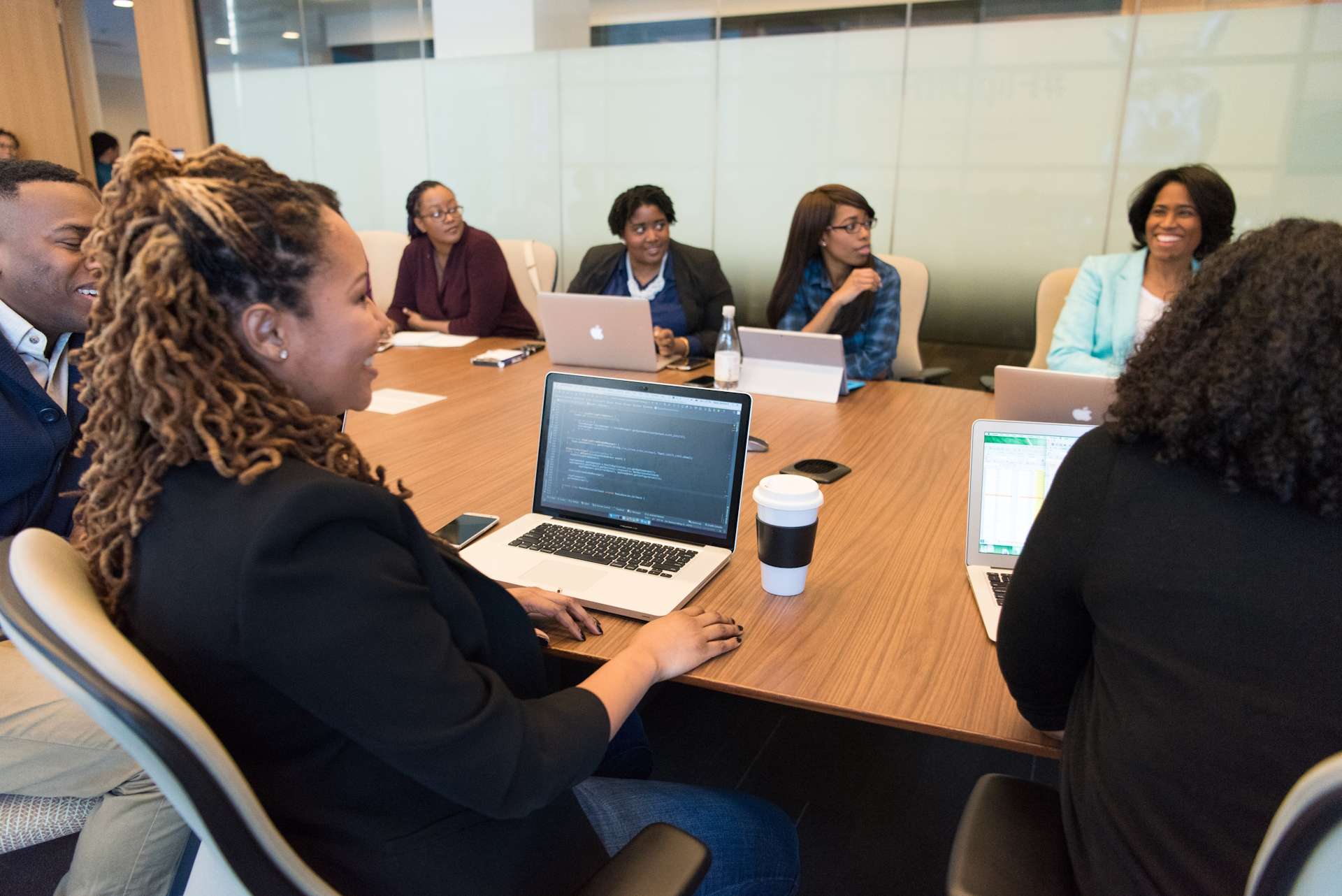Navigating Remote Workplace Culture: Challenges and Strategies
Navigating the Challenges of Remote Work Culture and Considering an Office First Approach
Remote work has revolutionized the modern business landscape, offering flexibility and advantages while presenting challenges to workplace culture. This article examines the complexities of remote work’s impact on culture, discussing risks, benefits, and strategies. It emphasizes the importance of maintaining a strong organizational culture for reputation, engagement, and performance. It also highlights the role of feedback, engagement, and the influence of the COVID-19 pandemic. The article explores the idea of transitioning back to an “Office First” work culture and the careful management of cultural aspects during change. Lastly, it underscores the significance of physical proximity in fostering collaboration. In the remote work era, organizations that preserve their distinct identity will thrive.

KEY POINTS
I. Introduction
Remote work has become a prominent feature of modern business, offering both opportunities and challenges for organizations worldwide. The appeal of flexibility, reduced commute times, and improved work-life balance has sparked a significant shift towards remote work arrangements. However, amid this transformative wave, there is a concern regarding the potential impact on workplace culture. The fundamental aspects that define an organization’s identity, values, and beliefs can face scrutiny in a virtual work environment.
This article explores the intricacies of remote work and its profound influence on organizational and workplace culture. We aim to challenge the prevailing notion that remote work seamlessly preserves an organization’s identity. By examining the risks, benefits, and strategies involved, we provide a comprehensive perspective on how organizations can navigate the remote work landscape while safeguarding their essence.
II. The Remote Work Culture Challenge
Remote work offers numerous benefits such as flexibility and reduced commute times. However, it also poses significant threats to workplace culture. One primary risk is the potential for weakened social bonds among employees due to the lack of face-to-face interaction, which can impede the development of interpersonal relationships. This can lead to feelings of isolation and disconnect, harming team cohesion, engagement, and morale. Another risk is the difficulty in transmitting and maintaining the organization’s values and norms in a virtual environment. Without physical reminders and rituals present in an office setting, employees may feel less connected to the company’s identity and mission. Additionally, remote work may exacerbate inequalities, causing divisions within the team.
The potential repercussions of these risks are significant. Weakened social bonds and a sense of disconnect can result in lower employee engagement, decreased motivation, and productivity. This, in turn, can lead to reduced job satisfaction and higher turnover rates. Increased turnover not only incurs financial costs but also disrupts team dynamics and productivity, further weakening the organization’s culture. Therefore, it is imperative for companies to proactively address these challenges to safeguard their organizational culture and maintain performance.
Culture is paramount in preserving an organization’s reputation. A strong, positive workplace culture distinguishes the organization from others, reflects its values, beliefs, and behaviors, and promotes employee engagement, productivity, and loyalty. This, in turn, translates into high-quality products and services, enhancing the organization’s reputation. Conversely, a weak or negative culture can harm the organization’s reputation, leading to low morale, high turnover, and subpar performance. Therefore, in the remote work era, it is essential for companies to intentionally cultivate and maintain their culture to protect their reputation and ensure their longevity.
III. Defining and Measuring Workplace Culture
Workplace culture is a complex concept that encompasses key elements shaping the work environment and influencing employee behaviors and attitudes.
- Values: These are the core principles that guide an organization’s decisions and actions. They set the standard for what is considered acceptable behavior within the company and can range from ethical standards to commitments towards customer service or innovation.
- Beliefs: These are the underlying assumptions that employees have about the company and its mission. Beliefs can influence how employees approach their work and how they interact with each other and the organization’s stakeholders.
- Traditions: These are the rituals, ceremonies, or practices that are consistently carried out within an organization. Traditions can help to reinforce the organization’s values and beliefs, and can play a significant role in shaping the organization’s identity.
- Structures: This refers to the organization’s hierarchy or the way it is structured. The structure can affect how decisions are made, how communication flows, and can even influence the level of collaboration and innovation within the company.
- Behaviors: These are the visible actions and conduct of employees. Behaviors are often influenced by the organization’s values, beliefs, and structures, and in turn, help to reinforce the culture.
- Moments in the Employee Experience: This refers to significant events or experiences that employees go through during their tenure in the organization, such as onboarding, performance reviews, or milestone celebrations. These moments can shape the employee’s perception of the company and can play a key role in defining the organization’s culture.
Understanding and actively managing these elements is crucial for creating a positive, productive, and sustainable workplace culture.
Measuring organizational culture goes beyond a mere exercise; it is a necessity. To truly comprehend the drivers of culture, organizations must employ scientific methodologies. These methodologies systematically analyze each cultural element, delving into the nuances of their culture. Quantitative surveys and qualitative interviews provide valuable insights into employees’ perceptions and experiences. Data analytics can help identify patterns and correlations among different cultural aspects. By adopting a scientific approach to culture measurement, organizations can transition from intuitive decision-making to evidence-based strategies. This ensures a more accurate understanding of the current culture and informs effective ways to shape the culture moving forward.
IV. The Role of Feedback in Virtual Environments
In a remote work environment, providing regular feedback on the organization’s culture is crucial. This practice promotes unity and shared understanding among geographically dispersed workers, ensuring clear communication of company values, norms, and expectations. It bridges the distance, fostering a sense of connection and allowing employees to voice concerns, suggestions, or questions related to the company culture. This two-way communication helps identify and address misalignment or misunderstandings promptly. Ultimately, frequent feedback in virtual environments maintains the coherence and integrity of the organization’s culture while enhancing employee engagement and satisfaction.
Feedback on an organization’s culture serves as a catalyst, fostering collaboration and fueling innovation. In a virtual setting, allowing employees to express their opinions and concerns creates an environment of open communication and mutual trust. This trust empowers employees to freely share ideas, leading to increased creativity and innovation. Regular feedback also encourages collaboration towards common goals, enabling the development of solutions that reflect diverse thoughts and perspectives. In this way, feedback, particularly in remote contexts, plays a vital role in establishing a collaborative and innovative work culture, contributing significantly to organizational success.
V. The Link Between Engagement and Culture
Engaged work units are vital for achieving successful business outcomes. A high level of engagement, driven by a strong workplace culture, can result in increased productivity, improved retention rates, and enhanced customer satisfaction. Engaged employees demonstrate a deep connection to their work, leading to higher efficiency and a commitment to quality. This active dedication directly impacts key business metrics like sales growth and profitability. Additionally, engagement fosters loyalty, reducing employee turnover and recruitment costs. Engaged employees also provide exceptional service, cultivating customer loyalty and driving growth. The correlation between highly engaged work units and positive business outcomes is not just a theoretical concept, but a practical reality observed across successful organizations worldwide.
A strong workplace culture significantly contributes to employee engagement by providing a sense of shared purpose and direction. When employees believe in the values and goals of the organization, they are more likely to be engaged in their roles. They feel part of something larger and are motivated to contribute their best towards the common mission. A strong culture also fosters a positive work environment, where employees feel appreciated, respected, and valued. This sense of belonging and recognition translates into higher levels of satisfaction, commitment, and productivity. Moreover, a robust organizational culture promotes transparency and open communication, allowing employees to freely express their ideas and concerns. This level of involvement leads to a sense of ownership and responsibility, further enhancing engagement. Therefore, a strong organizational culture, characterized by shared values, respect, transparency, and recognition, plays a crucial role in fostering high levels of employee engagement.
VI. Benefits and Risks of Remote Work
Remote work offers several advantages, including increased employee autonomy and the ability to structure workdays according to personal productivity patterns. This flexibility leads to a more balanced work-life integration. Additionally, remote work enhances productivity by eliminating daily commutes and reducing stress. The option to choose a personalized workspace minimizes distractions, resulting in a quieter environment.
Another significant benefit is the potential for cost savings. Employees save on transportation, wardrobe, and meal expenses, while companies can reduce office space and utility costs. Remote work also allows organizations to access a larger talent pool, fostering diversity and innovative ideas.
However, remote work demands trust, effective communication channels, and robust technology infrastructure for seamless collaboration. Employees must demonstrate discipline and responsibility, while employers should provide necessary support and resources.
At a superficial level, remote work seems beneficial. However, it presents considerable challenges. Isolation and loneliness can impact wellbeing and productivity due to the lack of face-to-face communication. Stress levels may increase without clear boundaries between work and home, leading to burnout. Decision-making processes can be slower, and employees may feel less involved in important discussions.
Remote work also opens the door for some employees to take undue advantage of the situation. Remote work demands a high level of trust from employers, and this trust can be exploited. Some workers may fail to maintain the required productivity levels and use work hours for personal tasks, believing that their decreased output will go unnoticed in the remote setting.
In some cases, the blurred boundaries between work and personal life may be manipulated to prioritize personal responsibilities over professional tasks, resulting in decreased work efficiency. Additionally, misuse of company resources, such as using company-provided technology for personal gain, can be more common in a remote work environment. Misuse of remote work not only affects individual performance, but could also impact team morale and overall productivity, presenting a significant challenge for organizations to manage effectively.
To ensure the success of their business, organizations must carefully weigh the benefits and risks and implement effective strategies to mitigate potential challenges. It is crucial to decide whether remote work is of any benefit to the employer, and if so to then strike a balance between flexibility and structure, maintain open communication channels, and prioritize work output.
VII. The Impact of the COVID-19 Pandemic
The COVID-19 pandemic has accelerated the transition to remote work. As global lockdowns and social distancing measures were implemented, businesses had to quickly adapt to maintain operations. This situation acted as a catalyst, demonstrating that remote work is not only possible but can also increase productivity and reduce costs. It offers employees flexibility and eliminates commuting, improving work-life balance. However, the sudden transition also highlighted challenges, such as work-from-home burnout and maintaining work-life boundaries. Businesses have responded by investing in resources and tools to support remote work, accelerating a trend that was already underway pre-pandemic.
The shift to remote work, accelerated by COVID-19, has presented challenges in maintaining organizational culture. Physical distance and lack of face-to-face interaction can weaken the sense of belonging and community, which are crucial to a strong workplace culture. Additionally, remote work reduces opportunities for spontaneous, informal interactions that foster camaraderie and team cohesion. Aligning employees with the organization’s values and mission is more complex in a virtual environment. To overcome these challenges, companies must devise innovative ways to preserve and communicate their culture in a remote work setup, such as virtual team-building activities, regular communication, and online company events.
The COVID-19 pandemic essentially forced companies to adopt remote work in an unplanned and hurried fashion.
The unplanned nature of the COVID-19 pandemic pushed companies into remote work. The initial transition was chaotic, and many organizations have now settled into a rhythm where employees come and go in various ways. What started as a necessary reaction to a crisis has now transformed into a new norm, often with vastly reduced efficiency and effectiveness. This new reality also means that businesses feel an increasing pressure to continue supporting remote work, despite their desire for employees to return to the office. Fortunately, companies are realizing that they are in control – recovering efficiencies through a return to office-based work.
VIII. Making Culture Visible in a Virtual World
Managers play a crucial role in reinforcing and exemplifying workplace culture, especially in a virtual landscape. They can make culture visible by acknowledging its integral aspects and intentionally incorporating them into their management approach. Regular and open communication is vital. Managers can utilize virtual group meetings to openly discuss and reflect on the company’s values, mission, and strategic goals, ensuring that every team member is aligned and fostering a shared sense of purpose. Additionally, managers can celebrate individual and team achievements that align with the company’s values, implicitly demonstrating the organization’s desired behaviors and accomplishments. These acknowledgments can be shared in virtual team meetings, company newsletters, or online communication platforms. Furthermore, managers can create opportunities for spontaneous, informal interactions online to foster camaraderie and team cohesion, such as virtual coffee breaks or game sessions. By doing so, managers can build a strong, visible culture even in a remote work environment.
It’s important to note that despite careful planning, there may be instances where behaviors deviate from the desired company culture. Such deviations can negatively impact team morale and productivity if not addressed promptly. When behaviors contrary to the culture arise, leaders need to confront them directly and constructively. This may involve difficult conversations, but it is crucial for maintaining the integrity of the company culture. Handling these instances correctly sends a clear message to all employees about the organization’s commitment to its values. It’s not just about penalizing unwelcome behaviors; it’s an opportunity to reaffirm what the organization stands for and what it does not. By addressing cultural deviations promptly and effectively, managers can ensure that their team operates in alignment with the organization’s core values, preserving the strength and unity of the company culture, even in a virtual environment.
IX. Adapting to an “Office First” Work Culture
As we move forward in the post-pandemic world, companies need to consider pivoting back towards an “Office First” workplace culture, making remote work a less favored option. Despite the benefits remote work brings, several aspects of a traditional office environment are challenging to replicate in a remote setup. Face-to-face interactions, for example, often foster better rapport and improve team dynamics, which are crucial for creativity and innovation. Moreover, onboarding new hires and integrating them into the company culture is often more seamless in a physical office environment. It also allows for immediate problem-solving and collaboration, something that may be hindered by time zone differences or communication lags in a remote setting. An “Office First” culture is also beneficial for employees’ work-life boundaries, as remote work can often blur the line between personal and professional life, leading to burnout. Hence, while remote work has its place, it might be worth reevaluating its predominance over traditional office work.
To facilitate the transition back to full-time office work, organizations must cultivate a flexible and adaptive cultural toolkit. This involves integrating new practices aligned with core values. For example, reintroducing in-person team-building exercises fosters collaboration and unity, mirroring the camaraderie found in physical offices. Additionally, establishing a robust communication strategy that promotes face-to-face interactions and transparency is crucial. Regular check-ins and feedback sessions enable the open exchange of concerns and ideas. Leveraging physical tools and resources effectively supports company culture by facilitating training, encouraging team collaboration, and recognizing employee achievements. By adapting and evolving their cultural toolkit, organizations can successfully transition back to full-time office work while preserving their unique culture.
Disruption, although initially challenging, presents an opportunity to reinforce an organization’s cultural foundations. These changes can be strategically aligned with existing cultural elements, emphasizing continuity and stability during the transition. For instance, the shift back to full-time office work can be linked to the company’s values of collaboration and teamwork, showcasing the organization’s resilience in adapting to new working environments. Similarly, the integration of physical tools and resources can be associated with a culture of efficiency and productivity. By doing so, employees perceive these changes as affirmations of the organization’s enduring values rather than threats. Furthermore, disruption provides a chance to reevaluate outdated or ineffective practices, realigning actions with core beliefs. Thus, disruption acts as a catalyst for the evolution and enhancement of culture rather than its destruction.
X. Approach with Care: Changing Cultural Aspects
Embracing change is vital for organizational growth and adaptability. However, cultural aspects tied to identity require careful consideration when making alterations. Sensitivity in handling cultural shifts is essential as they significantly impact the organization’s perceived identity internally and externally. Abrupt or drastic changes may cause confusion, resistance, and potential alienation among employees, undermining trust and unity within the team. Therefore, it is important to ensure that any changes to cultural aspects are gradual, inclusive, and transparent. Involving employees in the change process fosters ownership and commitment while maintaining the organization’s distinct identity and strengthening collective belonging. The implementation of cultural changes profoundly influences an organization’s identity, cohesion, and overall success.
Leaders play a crucial role in fostering a positive culture during the return to the office. Prioritizing open communication and collaboration helps teams build stronger connections and adapt to the new work environment. Encouraging face-to-face interactions, team-building activities, and shared experiences enhances camaraderie and promotes a sense of belonging. Providing support and resources, such as training on new office protocols and technologies, helps employees navigate the transition. Embracing a hybrid model that combines remote and in-person work creates a balanced and inclusive culture benefiting individuals and the organization as a whole.
XI. Culture Is About Actions and Meanings
Culture encompasses the actions we take and the meanings we associate with them, including in remote work environments. Despite physical distances, consistent communication, feedback, flexible work hours, and virtual team bonding activities convey inclusivity, respect, empathy, unity, and camaraderie. Resources and training further demonstrate an organization’s commitment to employee growth and well-being. In a remote setup, adapting to new methods of expressing these actions and interpreting their meanings is crucial. Shared values and behaviors form the foundation of an organization’s culture, connecting remote employees and fostering unity, commitment, and a sense of belonging. Leaders should regularly reinforce these values and behaviors to ensure a consistent culture, even in a remote work setting.
XII. The Importance of Physical Proximity
Physical proximity is essential for fostering spontaneous collaboration and swift responses to changes within a company. When team members work in the same physical space, they can engage in impromptu discussions, share ideas, and collectively troubleshoot problems. These encounters often spark creativity and innovation that may not occur in virtual meetings. Additionally, physical proximity enables non-verbal communication and contextual nuances that are often lost in digital communication. Co-located environments allow for immediate clarification, quick decision-making, and real-time adaptation to new situations. While remote work has advantages, the value of physical proximity in promoting effective collaboration and agility should not be overlooked.
Encouraging employees to return to the office full-time benefits a strong company culture. The physical environment of an office naturally cultivates camaraderie, engagement, and a shared sense of purpose. The office space reinforces the company’s identity and values as employees interact within it. Informal conversations, team lunches, and face-to-face brainstorming sessions contribute to a cohesive and dynamic team culture. These interactions foster understanding and empathy among colleagues, going beyond professional roles. While flexible working arrangements have merits, a full-time office setup plays a crucial role in cultivating a robust and vibrant company culture.
Conclusion
In conclusion, the rise of remote work signifies a pivotal moment in the employment landscape. While it brings some organizational advantages in terms of flexibility and work-life balance, it also presents significant challenges to an organization’s culture. Issues such as the potential erosion of social bonds, difficulty in transmitting values, and risk of inequality become prominent in this new era.
Organizations are not mere bystanders in this narrative; they can actively shape their organization through an office-first approach, whilst adapting their culture to thrive if remote work is required. By understanding their core identity and utilizing scientific methodologies to measure culture, they can establish a strong foundation. Regular feedback, effective communication, and strategic adaptations can foster unity, collaboration, and innovation among teams.
As the world continues to redefine work, organizations that successfully preserve their unique identity will surpass those who limit themselves to ineffective and culturally damaging remote work paradigms.
CONSULTING INTERVENTIONS
Merillot offers a range of consulting interventions related to cultural change, workplace culture, remote work culture, and return to office, including:




